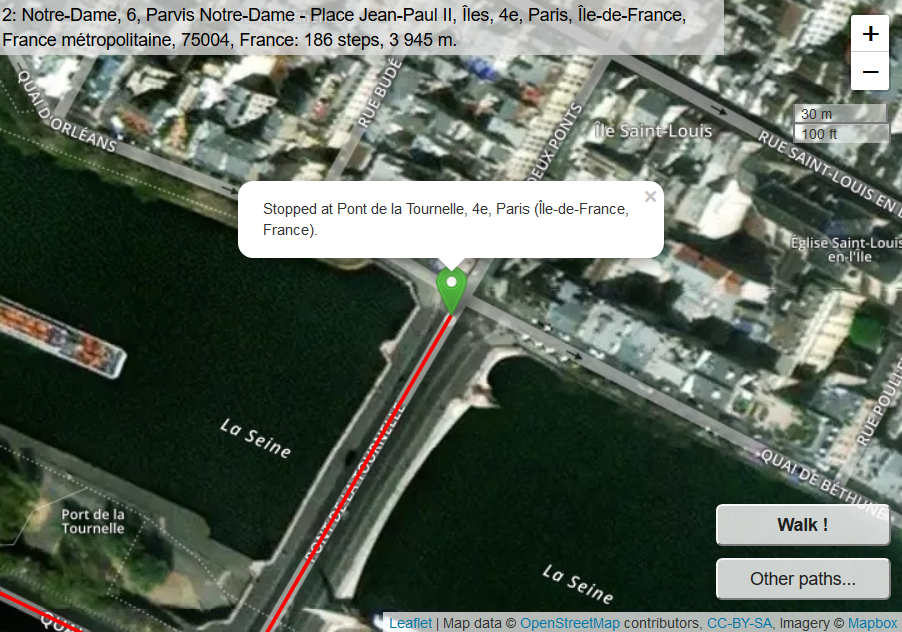Have you ever wondered where you will get to if you walk at random in a city ? Will you go far away or simply wander around in your neighborhood? It’s a well-known mathematical problem, usually applied in my country to people who have drunk too much.
A few days ago I thought it might be fun to watch that drunkard walk on Openstreetmap. Some quick coding with Leaflet, Overpass, Nominatim, etc., produced something I called Deambule.
 Every time you click on Walk, the drunkard, or let’s say the robot, walks 50 steps (where a step means going from one OSM node to the next OSM node on a way). At every corner it chooses one of the ways at random (trying to avoid directions he took very recently).
Every time you click on Walk, the drunkard, or let’s say the robot, walks 50 steps (where a step means going from one OSM node to the next OSM node on a way). At every corner it chooses one of the ways at random (trying to avoid directions he took very recently).